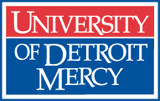Modeling Metropolitan Detroit Transit
Principal Investigators
- Dr. Snehamay Khasnabis
Wayne State University
Co-Principal Investigators
- Dr. Utpal Dutta
University of Detroit Mercy
Project Dates:
10/01/2007 to 03/31/2010
Project year: Year 1
MIOH-UTC Project Identifier: TS 14
Focus Area:
- Research: Intelligent Transportation Systems
Abstract:
The seven county Southeast Michigan Region, that encompasses the Detroit Metropolitan Area, ranks fifth in population among the top 25 regions in the nation. It also ranks among the bottom five in transit service provided as measured in miles or hours or per capita dollars of transit service. The two primary agencies that provide transit services in the region, DDOT and SMART, essentially cater to ‘captive riders’. Cities, across the USA, that have developed a strong transit base have two things in common: 1.) their ability to draw “choice” riders, and 2.) their success in building some type of rail transit system, in general, funded with money provided by the Federal government. Both these factors are conspicuously missing in the Detroit region.Over past three decades, a number of studies have examined the feasibility of rapid transit services in the Detroit region including speed link (rubber tired high speed buses), Light Rail Transit (LRT), Commuter Rail Transit (CRT) and High Speed Rail Transit (HRT). Among the many problems associated with building such a rapid transit system in the region, is the lack of a “quick response” tool or model that can be used by the planners/engineers to test the cost and operating implications of changes in vehicular and station parameters.
A joint team of researchers from Wayne State University and University of Detroit Mercy is developing a quick response, computer based model. The proposed model will efficiently analyze and capture the effect of transit vehicular changes (speed, capacity, acceleration, deceleration, etc.) and corridor/station parameters (BRT, LRT, station-spacing, station-length, etc.) upon the operation and cost of the system.
The research proposed has two components: 1.) Model Development and 2.) Model Demonstration. We propose to initially develop a “generic model” that can work with both BRT and LRT, the modes most likely to be built in the area, based upon demand and land use characteristics. Additionally, we propose to demonstrate the application of the model on one of the viable transit corridors in the region. Although we have indicated LRT on the Woodward corridor as the likely “vehicles” for demonstration of our model, a decision in this regard will be made after proper consultation with the planning / operating agencies in the region. The proposed model will be a valuable tool for planners and engineers, not only in Detroit but also in other regions of the country, for testing the operating and cost implication of changes in parameters such as transit vehicles, transit corridor and stations.
Final Report:
MIOH_UTC_TS14_2010-Final_Report_Modeling_Metropolitan_Detroit_Transit.pdf
Total Budget: $109,580
Sponsorships:
US DOT, MDOT, WSU, UDM





